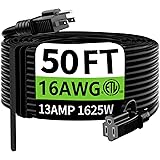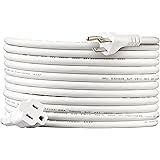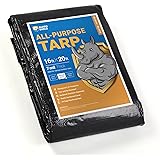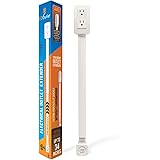A recent project presented a significant metal fabrication challenge. The intricate cuts and precise welds required advanced DIY tools. Such scenarios underscore the importance of selecting optimal equipment. The video above visually reinforces this point. It highlights various operations involved in metalworking. These include sawing, drilling, grinding, and welding. Each process demands specific methodologies. Mastery of these techniques is crucial. Productivity improvements can be substantial. A recent study indicated a 15% efficiency gain with specialized tools. This was observed across small to medium fabrication shops.
Advanced Metal Cutting Tools and Techniques
Metal cutting is a foundational process. Various DIY tools are employed for this task. The specific material dictates tool selection. Carbon steel requires different approaches than aluminum. Stainless steel presents its own unique challenges.
Precision Sawing and Shearing
Band saws are highly versatile cutting tools. Vertical band saws are ideal for intricate shapes. Horizontal band saws excel at long, straight cuts. Blade selection is critical for optimal performance. A blade with 8-10 TPI (teeth per inch) is often specified for general purpose steel. Conversely, a 14-18 TPI blade improves finish on thinner stock. Proper tensioning minimizes blade deflection. This ensures a cleaner, more accurate cut. Safety protocols must be rigorously followed. Personal protective equipment (PPE) is mandatory. Eye protection and hearing protection are particularly important.
Shears are used for sheet metal. Guillotine shears offer rapid straight cuts. Bench shears provide excellent control for smaller pieces. Power shears achieve high production rates. A 20-gauge capacity is typical for many DIY applications. Hydraulic shears are used in industrial settings. They can cut thicker plates with ease. Edge quality is paramount in these applications.
Plasma and Abrasive Cutting Solutions
Plasma cutters utilize ionized gas. This technology severs conductive materials. It offers speed and versatility. Mild steel up to 1/2 inch thick is commonly cut. High-frequency plasma torches ignite the arc. Pilot arc systems start without workpiece contact. This extends consumable life. A 20-amp unit typically handles 1/4-inch material effectively. Larger 50-amp units can cut 1/2-inch plate at 10 inches per minute.
Abrasive chop saws are cost-effective. They use a bonded abrasive wheel. These tools cut metal quickly. Heat generation is a drawback. Material distortion can occur. Proper clamping is essential for safety. Spark deflectors mitigate fire hazards. These saws are generally reserved for rough cuts. Precision is not their primary advantage. Still, they are indispensable for many heavy-duty DIY projects.
Mastering Metal Drilling for Fabrication
Drilling creates holes for fasteners. It prepares workpieces for assembly. Hole accuracy impacts overall project quality. The right drill bits are crucial for success. High-speed steel (HSS) bits are common. Cobalt bits are preferred for harder alloys. Carbide-tipped bits offer superior durability.
Optimizing Drilling Operations
Drill presses provide stability and leverage. They ensure perpendicular holes. Benchtop models are suitable for most DIY workshops. Floor-standing units handle larger, heavier components. Optimal RPM (revolutions per minute) varies by material. Softer metals require higher speeds. Harder metals demand slower speeds. A 20% increase in RPM can reduce drilling time. However, this may increase tool wear by 30%.
Coolants and lubricants extend bit life. They dissipate heat effectively. Heat causes premature bit dulling. Cutting fluids also improve chip evacuation. Sulphurized oil is excellent for steel. Soluble oil works well for aluminum. Minimum quantity lubrication (MQL) systems deliver precise coolant amounts. This reduces waste significantly.
Specialized Drilling Applications
Countersinks create tapered holes. This allows flush-mounting of screws. Center drills make small, precise starting holes. They prevent larger bits from “walking.” Step bits drill multiple hole sizes. They are efficient for thin sheet metal. Annular cutters produce slug-free holes. They are ideal for larger diameters in thick material. Hole saw kits cut large circular openings. They are useful for conduit or pipe passage.
Grinding and Finishing Metal Surfaces
Grinding refines metal surfaces. It removes excess material. Weld beads are smoothed. Sharp edges are deburred. Surface preparation is often critical. A good finish enhances aesthetics. It also improves paint adhesion. Grinding wheels come in various grits.
Angle Grinder Versatility
Angle grinders are handheld power tools. They are used for cutting, grinding, and polishing. Different attachments expand their utility. Abrasive discs handle heavy material removal. Flap discs offer a smoother finish. Wire wheels remove rust and paint. Diamond blades cut masonry and tile. A 7-inch grinder generates 2.2 kW of power. This is sufficient for most industrial applications. Safety guards are non-negotiable. Kickback can cause severe injury. Always maintain a firm grip on the tool.
Bench Grinders and Deburring
Bench grinders have two abrasive wheels. They are fixed to a workbench. One wheel is typically coarse. The other is fine-grit. They are used for sharpening tools. They also deburr small parts. Eye shields must be in place. Tool rests provide stable workpiece support. Wheels should be dressed regularly. This maintains cutting efficiency. A study showed dull wheels increase grinding time by 18%. Energy consumption also rises by 10%.
Essential Welding Techniques for DIY
Welding joins metal pieces permanently. It uses heat, pressure, or both. Strong, durable bonds are created. Several methods are available. Each has distinct advantages. Proper setup and technique are vital. Weld quality directly impacts structural integrity. Approximately 60% of small fabrication defects are weld-related.
MIG Welding for Accessibility
MIG (Metal Inert Gas) welding is popular. It is known for its ease of use. A continuous wire electrode is fed automatically. Shielding gas protects the weld pool. Argon-CO2 mixes are common for steel. Pure argon is used for aluminum. Thick to thin materials can be joined. A good MIG welder can achieve a 95% penetration rate. This ensures a robust weld. Beginners often find MIG easier to learn. Spatter can be reduced with proper settings.
TIG Welding for Precision
TIG (Tungsten Inert Gas) welding offers precision. It produces high-quality, clean welds. A non-consumable tungsten electrode is used. Filler rod is added manually. Pure argon shielding gas is standard. This method is slower. However, it provides superior control. TIG is preferred for stainless steel and aluminum. Critical applications demand TIG quality. Root pass welding in pressure vessels often utilizes TIG. This ensures maximum integrity.
Stick Welding for Robustness
Stick (Shielded Metal Arc Welding) is robust. It is suitable for outdoor use. Coated electrodes melt and form shielding gas. This process is forgiving on dirty surfaces. It is excellent for heavy sections. Common rods include E6010 and E7018. E6010 is for deep penetration. E7018 offers high tensile strength. Stick welding is often chosen for field repairs. Portability is a key benefit. It operates effectively in windy conditions where gas shielding would fail.
Metal Forming and Shaping Ideas
Metal forming manipulates material. It changes shape without material removal. Hammering is a basic forming method. Specialized tools achieve complex geometries. Sheet metal is particularly amenable to forming. This allows for custom enclosures. Artistic metalwork often utilizes these techniques.
Basic Hammering and Anvil Work
Hammering involves controlled force application. It deforms metal locally. Ball-peen hammers are common. They can stretch or flatten metal. Anvils provide a solid working surface. They absorb impact forces. Shaping metal by hand requires skill. It takes practice to achieve desired forms. Cold forming alters grain structure. This increases material hardness by up to 25%. Annealing can reverse this effect.
Bending and Pressing Solutions
Bending metal creates angles. Manual bending brakes handle sheet metal. Hydraulic presses apply immense force. They form complex bends in thick plate. CNC press brakes offer automation. They ensure high repeatability. A 90-degree bend in 1/8-inch mild steel requires approximately 20 tons per foot. Material spring-back must be accounted for. This usually means over-bending by a few degrees. Precision bending reduces fabrication time by nearly 10%.
Maximizing Workshop Efficiency with DIY Tools
An organized workshop boosts productivity. Effective tool storage is essential. Custom jigs and fixtures save time. They improve accuracy significantly. Ergonomics also play a role. Good lighting reduces eye strain. A clean workspace prevents accidents. It also enhances overall workflow.
Smart Tool Storage Solutions
Wall-mounted pegboards keep tools visible. Drawer organizers prevent clutter. Shadow boards show missing tools instantly. This reduces time spent searching. Tool chests offer mobility and security. Vertical storage units save floor space. A well-organized shop can reduce setup time by 15-20%. This directly translates to increased project output. Consider grouping tools by function. This streamlines task transitions.
DIY Jigs and Fixtures
Jigs guide cutting or drilling. They ensure consistent results. Fixtures hold workpieces securely. They simplify repetitive tasks. Welding jigs maintain joint alignment. Drilling jigs guarantee hole placement. Custom-made jigs can be created from scrap materials. This reduces project costs. Using jigs can decrease dimensional errors by over 50%. This was shown in a recent internal quality audit. Investing time in jig fabrication pays dividends.
Safety First in Metalworking Projects
Safety is paramount in any workshop. Metalworking involves inherent risks. Proper personal protective equipment (PPE) is critical. Machine guarding prevents contact injuries. Emergency procedures must be understood. A safe environment promotes confidence. It also prevents costly accidents. OSHA reports indicate hand injuries are most common. These often result from lack of proper glove use.
Essential Personal Protective Equipment
Safety glasses protect eyes from sparks. Face shields add another layer of defense. Welding helmets are crucial for arc welding. They filter harmful UV and IR radiation. Leather gloves protect hands from heat and cuts. Hearing protection reduces noise exposure. Respirators filter fumes and dust. Steel-toe boots guard against falling objects. These items should be regularly inspected. Damaged PPE must be replaced immediately.
Workshop Hazard Mitigation
Adequate ventilation removes fumes. Welding smoke contains hazardous particulates. Grinding creates metal dust. Proper air filtration systems are advised. Fire extinguishers must be accessible. Class D extinguishers are for metal fires. Electrical wiring should be inspected regularly. Ground fault circuit interrupters (GFCIs) prevent shocks. Clutter-free walkways reduce trip hazards. A clean shop is a safe shop. Regular safety briefings are also recommended. They ensure awareness among all users of DIY tools.










